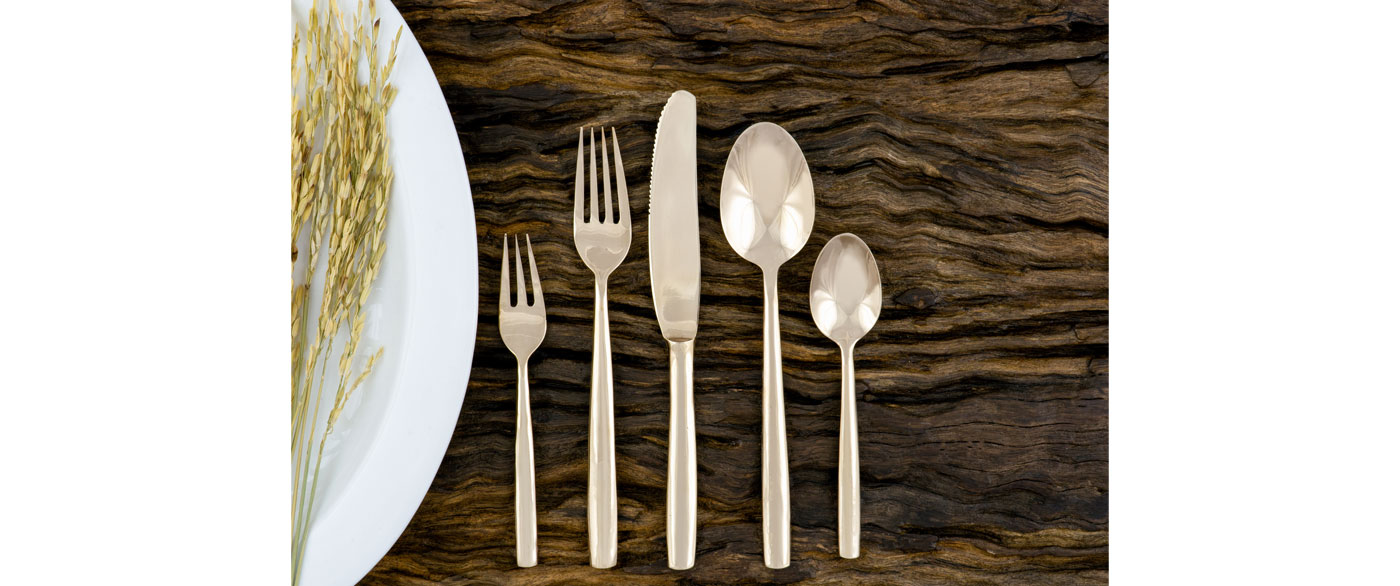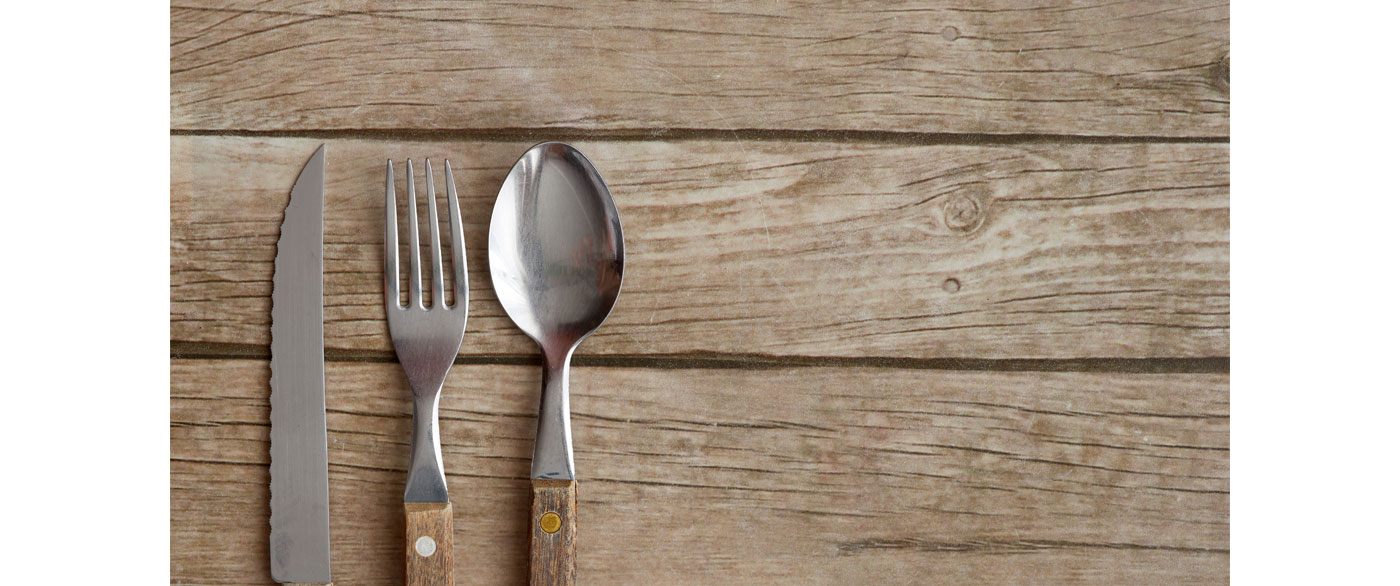HOW TO SET THE PERFECT TABLE
Setting the table also means adhering to labels, rules that have been handed down for centuries and have been changing over time and with the change in the way people experience mealtimes.
There is a way to categorize each of the items used to set up the perfect mise en place: water glasses (larger) and wine glasses (smaller); soup plates, coupe plates and pasta bowls; cocktail napkins, folded in fours, eights and so on.
Very often one of the most difficult labels to adhere to is cutlery, because so many lines of it have been categorized that it is very complex for a venue to manage them all.
Let us then go into the details of how the various brands divide their types of cutlery.
CUTLERY SIZES
TABLE FLATWARE
Table cut lery is generally the most commonly used in restaurants to make up the basic line: spoon, fork and knife, the latter used for mise en place more than for actual use.
Indeed, when the guest chooses the course, it is increasingly the case that the knife is replaced or one is brought in at the same time as the next course. Often this is a classic pizza knife, fitted with a saw, or a steak knife, serrated or increasingly flush-edged, so as not to ruin the fibers of the meat.
The same happens when a soup is on the menu, the tasting of which is facilitated by the spoon called precisely 'soup'.
If the customer chooses fish instead, one should replace not only the knife, but also the fork. The fish knife is completely smooth and almost without a blade, but equipped with a small cut that allows ideal collection of the food from the plate, while the fork has the cuts of the central tines deeper, so as to be as efficient as possible.
FRUIT CUTLERY
Cutlery can be found in a smaller size, referred to as 'fruit' but also used for desserts. The only exception is the fork, of which there is also a 'dessert' type, because instead of having four prongs-like the table fork and fruit fork-it has three.
The fruit spoon, on the other hand, is often confused with the coffee spoon, because the coffee type is defined as such by the label, but in reality its size allows it to be used for tea, herbal teas, cappuccinos, chocolates, and sometimes for spoon desserts given its smaller size when compared to the fruit spoon. The smallest of the coded spoons-if we exclude finger food spoons-is the mocha spoon, used for serving espresso coffee. Special mention should be made of ice cream spoons, whose shape is unmistakable because it is cut, as if it were a real scoop; their design allows for easy tasting, for scooping ice cream down to the last drop. Finally, the drinking spoon, the longest of the serving types, often used for sundaes, smoothies, deep cups, as well as lattes and eats and drinks served in tall tumblers.
Excluded from this coding are all those cutlery so specific that it is used only for specific courses. Classic examples are the snail fork and the lobster fork; without going into too much detail, let's just mention ramen spoons, claw-cutting tongs, and fondue skewers.
WHAT DETERMINES THE QUALITY OF A CUTLERY?
In conclusion, RGLife reminds you that the value of a cutlery is given not only by the material from which it is made (e.g., silver or stainless steel) but also, and especially, by its thickness.
The thicker a piece of cutlery is, the more valuable it is, a value it conveys to the table for which it is chosen... in this regard, all you have to do is fish in the assortment ofRGmania!


